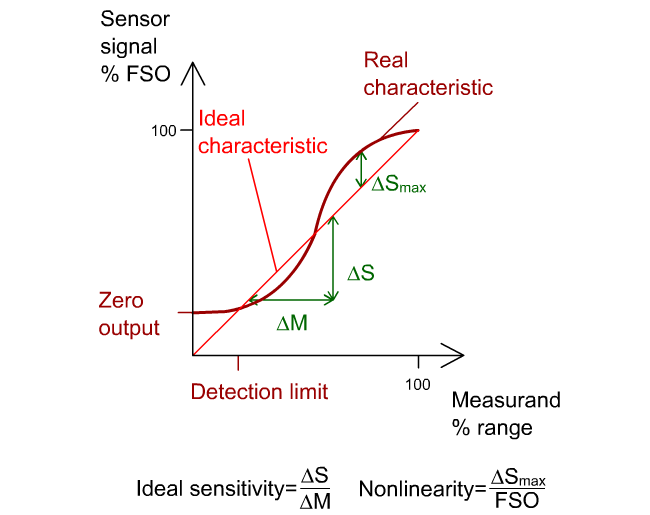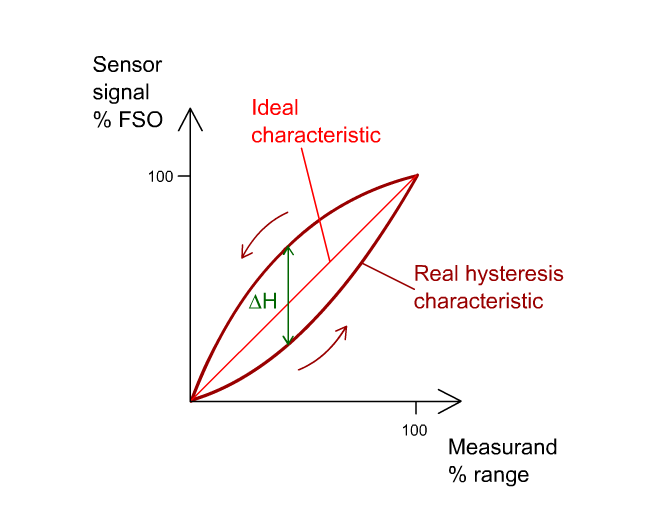
1 - Introduction
1.4 - Characterisation
Characterisation
Calibration curves indicates the static characteristic properties.
Other important features for sensors:
- Repeatability (sometimes called reproducibility) is the ability of a sensor to reproduce output readings when the same measurand value is applied to it consecutively, under the same conditions, and in the same direction.
- Interchangeability means the maximum possible error of the measurements when an individual sensor device is changed within the measurement appliance for another one of the same type.
- The response time is the length of time required for the output to rise to a specified percentage (generally 90%) of its final value (as a result of a step change in measurand).
- Selectivity means the suppression of the environmental interference. The ideal sensor will only respond to changes in the measurand. However, in practice, sensors can also respond to changes in other quantities, for example temperature. These cross-effects can be eliminated by compensation or multisensor operation.
- Lifetime is also an important property of sensors; it is the length of time that they remain sensitive under normal operational conditions.
Static characteristics
These curves give the most important behavior of sensors: the relationship between the output signal (S) and the measurand (M).
Sensitivity is defined as the slope of the former function. In linear ranges, it is a constant (see below).
FSO stands for full-scale output of the sensor. This is the maximum (or nominal) output signal.
Linearity is the closeness of a sensor's calibration curve to a specified straight line. It is expressed as a percent of FSO, which means the maximum deviation of any calibration point from the corresponding point on the specified straight line
The limit of detection is the lowest value of measurand that can be detected by the sensor. Resolution is the smallest increment in the output, given in percent FSO.
The zero-measurand output ("the zero" or offset) is the output when the zero measurand is applied. Zero shift (or drift) is a change in the zero-measurand
output under specified conditions.

Hysteresis characteristics
Hysteresis is the maximum difference in output, at any measurand value within the specified range, when the value is approached first with an increasing and then with a decreasing measurand. It is also given in percent FSO.

| Previous | Next |
